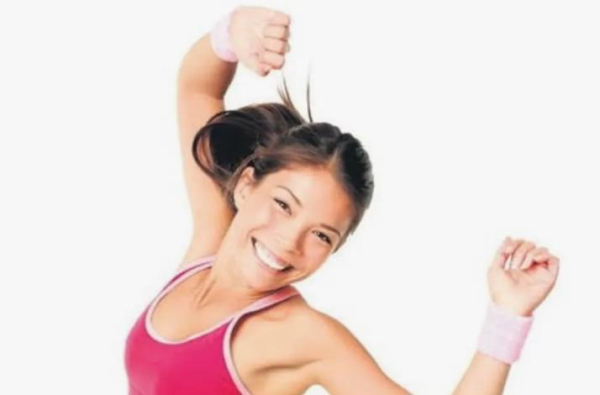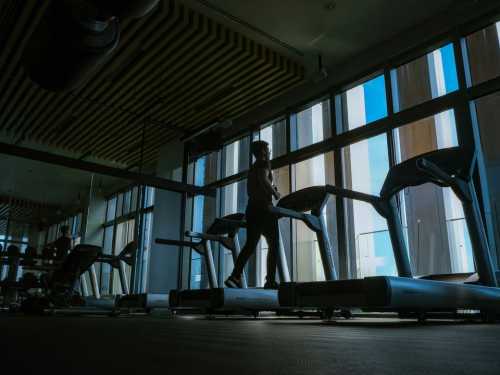
Most martial arts classes include a warm-up, often combined with general or specific physical training. How do they differ?
General physical training (GPT) is aimed at developing general physical qualities: strength, general endurance, agility, general coordination, etc. Qualities that everyone may need in ordinary everyday life.
General physical training is often combined with a warm-up and is called a warm-up. A warm-up is simply intended to warm up and prepare for the main workout. The goal of general physical training is to improve functional performance: increasing the number of push-ups, running faster and further, mastering simple acrobatic moves like somersaults…
In other words, general physical training is essential and roughly the same for all of us and all martial arts systems. This is precisely what you practice first and foremost in martial arts classes, as it's the foundation of both your health and your ability to perform effectively during training.
General physical training is more or less familiar to everyone; everyone has encountered it in one way or another, at least in physical education classes.
Most martial arts schools offer the same old routines: running, goose steps, abdominal exercises, bends, and swings. And lots of push-ups… It's practically a mandatory part of the program. Unfortunately, it's essential for most of our contemporaries. And it's pretty much the same everywhere.
But another type of physical training varies significantly from school to school. Moreover, specialized physical training (SPT) is sometimes barely recognizable as physical training. This is due to its highly specific focus. SPT develops qualities specific to a given martial art. Each sport has its own.
Sometimes these are exercises from general physical training or very similar ones. For example, fencing has a ton of seemingly track and field exercises: running, jumping. In reality, these are special physical training exercises that develop agility, jumping ability, overall speed of movement, and explosive power. These are no less important in sport fencing than weapon handling.
For example, the “shuttle” run directly influences the quality of execution of such an element as the “arrow” attack.
SPE includes boxing jump rope and sledgehammering on a large car tire. The former develops the legs for specific boxing movements; the latter teaches how to put the entire body into a punch.
Similarly, in historical fencing, they strike projectiles with a heavy sword or a metal object of similar size and weight. I can assure you that half an hour to an hour of intensive work with a heavy iron object on tires significantly improves technique…
For example, karate has a section called hojo-undo: working with massive weights, reminiscent of sledgehammers or long-handled maces. No, these devices aren't used to hit targets. Rather, they are used to perform very specific movements, simulating the muscle work involved in karate techniques.
Traditional equipment includes heavy sand-filled jugs, stone kettlebells and barbells, etc. I repeat: all of this is not for “stupid pumping,” but for shaping the body for proper execution of techniques.
And the famous “punching board,” the makiwara, is ideal not just for practicing punches, but specifically punches in the karate style.
In some modern, flexible martial arts systems, the basis of SFP may be exercises in flexibility and relaxation, as well as wave-like and circular movements. A number of popular “Russian styles” utilize lower acrobatics as SFP.
Some SFP techniques don’t even look much like physical exercises.
For example, the so-called “standing post.” This essentially involves holding a standing position for a certain amount of time. Doesn't sound like physical training? But it is, just specialized. Can you stand still for 10 minutes?
In general, standing still for even ten minutes is no easy task. And it's quite physically demanding. In the pole, however, a very specific, precisely calculated pose is maintained, one that is also specific to different martial arts schools.
What does this achieve? “Simply” relaxing “superfluous” muscles and building a clear, stable body structure. You can't tense up forever! With practice, unnecessary, “parasitic” tension required to maintain a position disappears, leaving only the minimum necessary to maintain the structure.
By practicing the “pillar,” we first learn to stand and then move optimally, engaging only the necessary muscle groups with the necessary and sufficient force. In other words, we learn to move optimally. As a bonus, this allows us to exert greater force when needed. Simply put, this allows us to block powerfully and strike powerfully.
Even push-ups, so beloved by karate trainers, are not just a way to combat wastage, but an element of physical training that engages the muscles that work when performing a straight punch, in a manner specific to karate.
Moreover, both punching and push-ups can be performed in different ways: with both horizontal and vertical fist positions. Consequently, they involve slightly different muscles. And just as we punch, so we do the push-ups.
Even some seemingly ordinary warm-up exercises, like leg swings and stretches, are actually elements of SPT. When performed correctly, they not only warm up but, most importantly, align the body in a manner appropriate for a given martial art, adapting it to the correct movement pattern and optimal application of force, as defined by the system.
That is, in essence, SFP is closer to the development of technique than to physical training itself in the usual sense.
The body is adapted to the techniques of a given martial art. The “necessary” muscles are developed, while the antagonist muscles can be deliberately “disabled.” The practitioner learns to move correctly, with optimal effort.
Let me repeat: everything here is “correct” and “optimal”—first and foremost, from the perspective of this particular martial art. That is, special physical training adapts and restructures the body to facilitate the execution of techniques. And don't confuse specialized physical training with general physical training. Then, proper, understanding practice of “physical training” will give you a new understanding of what you're doing.






